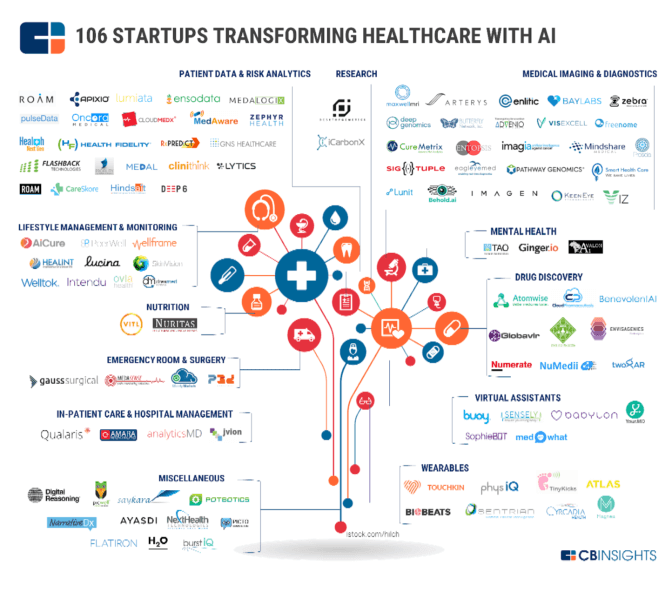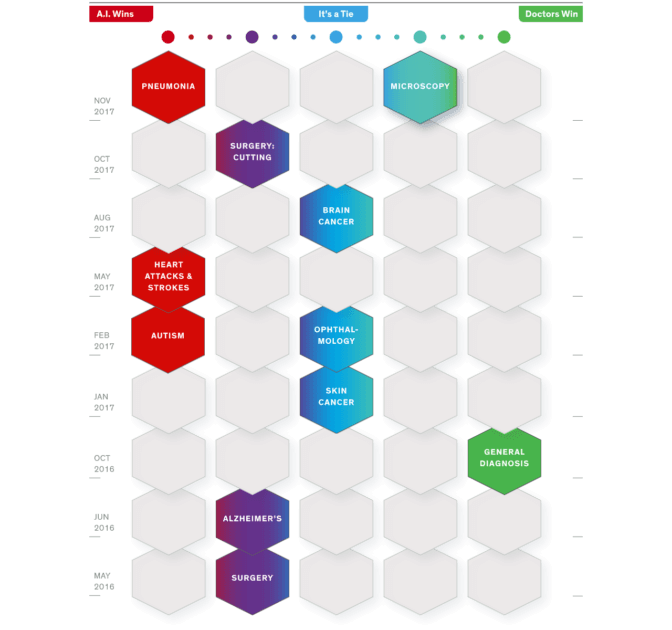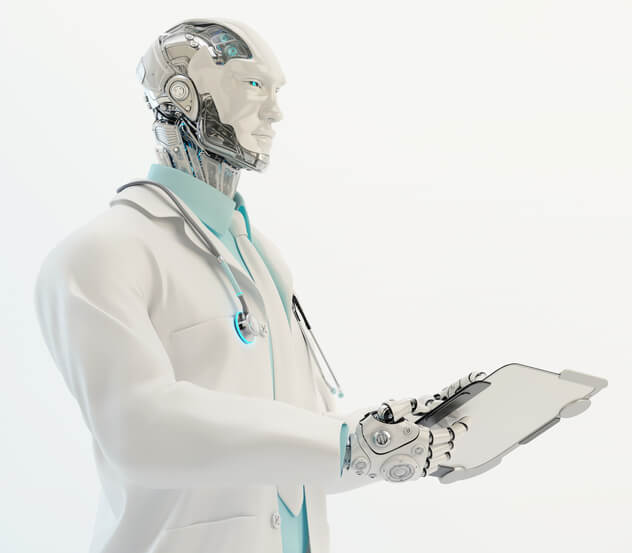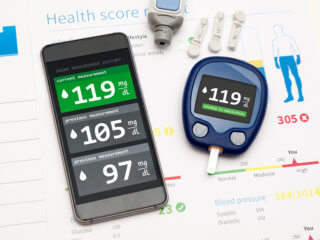AI in digital healthcare: Can AI alleviate doctor shortages?
Artificial intelligence(AI) is a very broad term that many are still scratching their heads about. Simply put, it is a coded program that has been trained to automatically perform tasks, such as data analysis. AI programs have been developed for many different fields, but healthcare is perhaps the most notable of all the fields. The AI being developed is making an impact in countries all over the world and actively progressing towards saving the greatest number of lives possible.
These programs have duties that include analyzing data from clinical trials, chatting with patients to help diagnose issues before they even see a doctor, recognizing cancerous tissue, reading x-rays, and so many more.
Funding has grown dramatically in the past few years and is expected to grow exponentially in the future, as shown in the chart below.

Image courtesy of Accenture Analysis
What patients can anticipate in their own daily life is represented aptly by the chatbot developed by Babylon Health. A patient can log in, report a symptom, and the chatbot will engage them. The bot will ask them some questions such as if the user has recently suffered a head injury when a headache is reported, and then uses the responses of the user to give a potential diagnosis. The bot can also recommend a course of action, such as seeing a doctor soon, going to the store for over the counter prescriptions, or calling the emergency hotline.
An app called Aipoly is assisting the visually impaired navigate their lives easier by analyzing footage shot through a camera and describing the user’s surroundings to them, including the relative position of objects.
Google DeepMind Health is one of the top AI companies, providing the solution to analyzing data from medical records to recognize trends and create a bigger picture from the data.
IBM Watson is another leading player, which is a speedy data analysis program being used to interpret patient’s data in less time and more accurately than manual efforts.
Physicians took on a task to comb through patient databases and produce treatment recommendations. The physicians spent 160 hours to complete the tasks, while IBM Watson took 10 minutes and had more accurate results. This program is most often used to provide alternative opinions to healthcare specialists, a way to double check their work.

Image courtesy of CBInsights
| Recommended for you | |
| Can mobile apps and wearables replace traditional drugs? | |
| Ethics for AI in medicine | |
| Artificial Intelligence for beginners |
How can AI improve automatic medical diagnosis?
Clinical workflow being improved is perhaps the biggest benefit of these programs. It allows doctors to spend less time waiting for results, which means more time to treat patients. It also reduces human errors and takes any personal biases out of diagnosing, as long as the program has not been created with any biases.
Some of the many applications of AI include chatbots, oncology specimen analysis, aiding in specimen processing in pathology, and reading x-ray and ct scan images.
The company Babylon Health has created a chatbot that talks to patients and determines if there’s a need to visit the doctor, and attempts to diagnose them before even seeing a doctor. This significantly streamlines the diagnostic process and helps give patients peace of mind.
Oncology has benefitted greatly also, with programs that can diagnose breast cancer more efficiently than most doctors under a restricted amount of time and others that can recognize skin cancer based on images of blemishes and moles. These are still under development, but when perfected; can shrink oncologist’s workload significantly.
Similar AI programs are under development to process pathology specimens in record time. Pathology will still require human labour, but the programs which are under development will increase the accuracy significantly.
Human diagnostic accuracy usually falls around 96%, while AI alone falls around 92%. Together, they achieve an accuracy of 99%. Reading x-ray and other forms of imaging are getting more accurate as well with the development of AI technologies. Currently, the AI systems are mostly used for basic imaging analysis, as the complex cases are not within their coding’s reach. Below are the number of startups in each area by year, showing the large numbers of advancements being made. The ones mentioned here are simply the tip of the iceberg and the number grows by the year.
These streamlining measures will be most useful in the countries that are currently experiencing shortages of doctors. Most notably this affects China, which has an extreme shortage of doctors.
There are far too many AI applications in China to name, but some of them include using AI to design dentures, read lung scans to check for lung disease and detect blood clots.
India is not far behind, becoming one of the world’s leaders in AI advancement to combat their shortage. They have funded the company Tricog Health, which is working towards providing more access to cardiac care. It works to remotely diagnose patients by listening to their symptoms and then referring them to specialists, who then instruct them how to further receive treatment.
Rwanda is a third world country that has embraced AI to bring its insufficient healthcare system up to speed. They are currently using drones to deliver blood to those in rural or hard to reach areas of the country.
Can AI alleviate doctor shortages?
Diagnostics is probably the area receiving the most attention in this advancement of AI technology, which is good for streamlining the everyday duties of a doctor. Radiologist’s workloads will greatly decrease with their imaging being analyzed by programs, as with pathologists and oncologists.
The average doctor can look forward to results being processed quicker and patients coming into the hospital with the possible diagnosis, thanks to the chatbots. And overall, the doctor shortage that so many countries are experiencing can be alleviated.
Most AI developers are united in not claiming to replace doctors, as no AI can truly be perfect. There will almost always be some sort of drawback and there needs to be a sort of checks and balances to the diagnostic processes. After all, data is not the only thing that is needed to diagnose. Intuition and previous experience also help determine a doctor’s diagnosis.
An AI model is currently not able to come close to replacing human diagnostic methods. So for the foreseeable future, they will simply aid doctors and not replace them.
Some may be concerned about jobs being replaced by AI, but that is not a realistic assumption as an AI will always need someone to check on its progress and measure its accuracy. AI serves to supplement a practitioner’s progress, not replace it. And while there is always a possibility of AI making mistakes, human mistakes are far more common and should always be taken into account. As shown below, the effectiveness of AI vs humans is not even across the board. Some specialities are more complex and require different degrees of intuition and delicate work.

Image courtesy of IEEE Spectrum
One mistake doctors make is over-relying on new technologies. For example, parasites are often missed in blood samples because the machines that process blood have a hard time spotting them. Laboratory workers often neglect to check the samples through a microscope to check for parasites, leading to misdiagnosis. This is possibly the biggest threat, believing that new technology will completely replace the need for human checkpoints.
Healthcare workers simply don’t account for machines making mistakes, and this could lead to problems quickly. Simply remembering to stop and check the machine’s results can eliminate the biggest issue facing AI advancement, and leading to a more promising collaboration between AI and humans.
Image credit: www.istockphoto.com

















